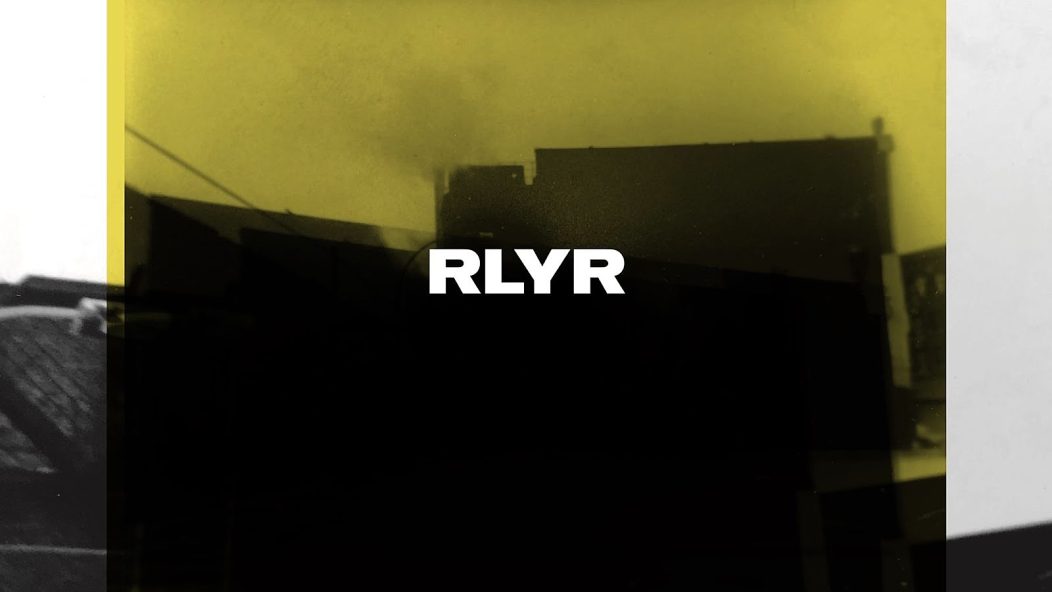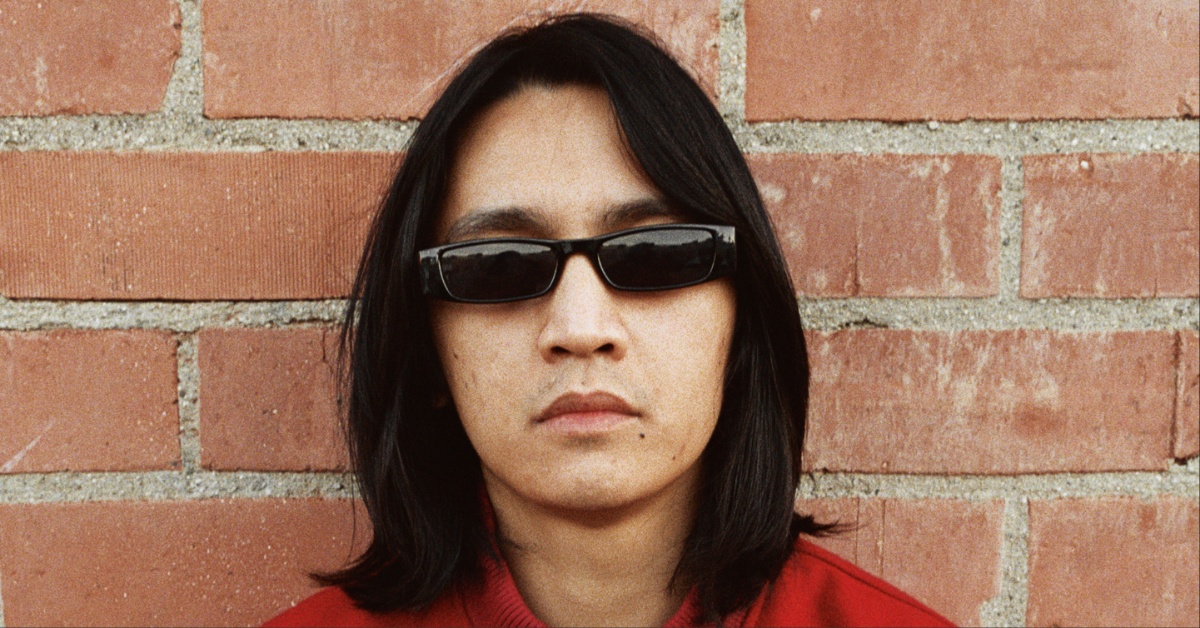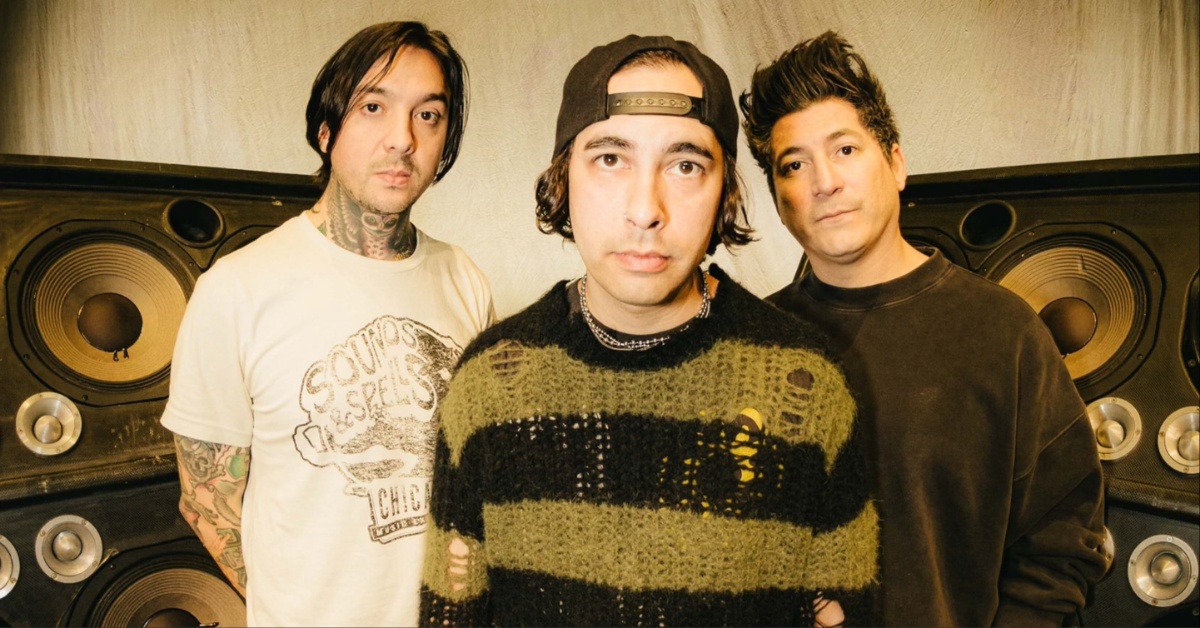
RLYR (mems. Pelican, Locrian, Bloodiest) Rocks On New Self-Titled Album (Full Album Stream + Interview)
The first time I saw Chicago-based trio RLYR (pronounced “Relayer”), they weren’t even RLYR yet, nor were they a trio. Pelican’s Trevor de Brauw and drummer Steven Hess (also of Locrian, Cleared, Haptic, and probably more) were invited to Milwaukee to play a special collaborative set at the second Utech Records Music Fest, a three-part festival series curated by Utech Records’ (Horseback, Locrian, Nadja, Dead Neanderthals) Keith Utech. I had first met Trevor seeing Pelican open for Opeth in Houston a few years prior, and Steven and I were in close contact from his exploits in Locrian, who are still the best band in Chicago, even if Andre and Terence have moved elsewhere. The joyous, rocking sounds which emitted from this pre-RLYR outfit were intriguing, especially for an experimental music festival. I guess it ended up working in their favor, as RLYR very soon after became a full band, inviting Bloodiest’s Colin DeKuiper into the fold on bass.
Now on their third album, RLYR’s eponymous work acts as a distillation of the strange, mathy, emo-y rock championed on Delayer and Actual Existence, but also an appending. Though RLYR has always been a “progressive” band in some terms, it’s on RLYR where the idea of rhythm becomes a little looser and more natural.
“[Approaching rhythm was] exceedingly natural,” says Trevor, “to the extent that in some cases I don’t realize a part is offtime or in a non-traditional time signature until we’ve been playing it for quite awhile. I did try counting out the riff from ‘Wrack’ at one point, but I’m sure it doesn’t matter what time signature it is because we’re just playing by feel anyway.”
“I’m hopeful that when one listens to RLYR they feel a little sunniness,” says Steven Hess, and sunny the album is. Hearkening back to the first time I heard the song “Stars,” or maybe even my first (actual) emo record, RLYR is radiant, happy, and nostalgic, but without being saccharine. Now scene stalwarts in their own right, RLYR look back on their works and feel a sense of pride and lightheartedness, and to think all it took was a chance invitation to play an experimental music fest in Milwaukee to make it happen.
Listen to RLYR in full and read an interview with the band below.
…
…
It took three albums for RLYR to release a self-titled record. What made you want to go the eponymous route this time around?
Trevor de Brauw: The first two albums we went into already having a title in mind and this one we didn’t. In the back of our minds we knew that at some point we’d have to come up with an album title, until we realized that maybe we didn’t? That said, the way the album art came together the design feels cleaner and more direct with just the band name on the front. And I definitely appreciate the juxtaposition of the clean simplicity of the album title and art with the rather intricate construction of the songs contained therein.
RLYR tends to err on the complex side. Is this your intent?
Trevor: I feel that this band is a lot more intuitive than intentional when it comes to songwriting, it’s just that our intuitions naturally guide us toward complex structures and arrangements. Our songwriting process is rooted in free improvisation; seeing where those jams go and taking the best moments as a base to build structured compositions on top of. There’s no intent to make the songs complicated or to willfully make things more complex, that’s just sort of where the process naturally leads us. If anything, we tend to overstuff the songs from the beginning and end up putting more thought and effort into trying to simplify and streamline them.
What do you feel RLYR achieves with this complexity?
Trevor: Like many, my entry point for playing guitar was through punk and as a result musical complexity was almost antithetical to my initial approach to songwriting. I think this trajectory shifted with the discovery of bands that had that a similar jumping off point, but took their songs down winding paths to get where they were going–I’m thinking especially of songs like “J’Nuh” by Sunny Day Real Estate, “Sea Foam Green” by Jawbreaker, “Chatroom Walkout” by Garden Variety, and so forth… songs that have winding instrumental sections that take the listener somewhere unexpected, playing out as something like a musical journey. I think once I was opened to the world-building potential of more complex structures I got really hooked on chasing that feeling of a song taking you somewhere unpredictable. That aesthetic is now so ingrained in how I write that sometimes I find myself at a loss when trying to write something more direct and simple.
Some riffs (like in “Wrack”) eschew proper time signatures (which could probably be mapped out if I wasn’t so lazy) for something more pulse-oriented. What is it like centering around this more organic approach to rhythm?
Trevor: Exceedingly natural, to the extent that in some cases I don’t realize a part is offtime or in a non-traditional time signature until we’ve been playing it for quite awhile. I did try counting out the riff from “Wrack” at one point, but I’m sure it doesn’t matter what time signature it is because we’re just playing by feel anyway.
There is a distinct sunniness to RLYR, something which I’ve referenced in another writeup about this album. What is it about this type of hazy, nostalgic music that appeals to you?
Steven Hess: That’s good to hear! I’m hopeful that when one listens to RLYR they feel a little sunniness. The three of us all have a wide range of influences and we have a tendency to talk about the prog bands of the 70s and 80s which in turn becomes the basic foundation for the sounds and structures we are going for. I’d like to think RLYR are “positive forward progressive.” Although we get into a bit of grit and knuckle-dragging here and there as well. Personally, my thoughts are that the three of us have played, and continue to play, in bands with a bit darker style, and I might even say a serious side, which is exactly what those bands need and are going for, but in RLYR we are writing complex songs but with more of a lighthearted, playful twist and exploring music for its own sake.
Compared to your other bands and projects, RLYR is very much a “rock band.” Do you find that you have to get into a specific mindset for RLYR compared to other musical ventures?
Trevor: I’m familiar with this practice of having to get into a specific mindset to write specific music- I remember in the band I used to play bass for, Let’s Pet–I would listen to New Order before practice to try and access Peter Hook’s playing style by osmosis, but with RLYR not so much. Since all of our music is written in the practice space it’s really just a matter of this being the music that we’re pulling out of one another. That said, I made at least a couple of conscious attempts to push my playing on this set of songs into a more overtly metal direction–there’s some deliberate thrash-isms in the guitar work on “Distructure” and at least one direct death metal homage in “Wrack,” along with some less deliberate influences that seeped their way into the album.
The musicianship element is definitely a big part of RLYR. Big, techy riffs, blast beats(???), atypical grooving, all key to making RLYR the album it is. What is it about the RLYR approach which commands such musicality and proficiency?
Colin DeKuiper: I think Trevor and Steven would agree that it isn’t the intent. We still write together within the practice space, but I live in Michigan now so unfortunately I am not joining for weekly practices. Trevor and Steven do a great job documenting parts they come up with and send them to me as they develop so that I can then come in with ideas when we all get together. Sometimes the parts are immediately a challenge to latch onto, but the technicality or complexity is likely a result of just continually working the songs over a period of time and finding more ideas that we want to include. We do probably write in a more additive manner building on a foundation versus reducing a lot of ideas from the start. We will cut things, but more due to the length of a specific part or section.
Closer “Codeine Horse” moves similarly to early post-rock: A Minor Forest, Slint, that type of stuff. Reckless, energetic, lots of dynamics. Do you feel a kinship to this type of music?
Colin: I wish that I did a better job of documenting our initial songwriting “cheat sheets.” These are essentially our lists of “part A, part B, etc.” but substituting a band name for the alphabetical letter so that we can remember song structures. The actual parts are never written to sound like the band we are referencing, but typically a reaction coined by whoever names the part first. Often, it is just how a part feels and not necessarily how it sounds. “Codeine Horse” is a part reference that stuck around to be a song title. This is a long way of saying, yes absolutely. We are all fans of artists that would likely fit within that genre and would add Codeine to the list and some of our favorite (Neil Young &) Crazy Horse songs as well.
Trevor: I’m pretty sure Steven has a folder of several, if not all, of the riff cheat sheets. They aren’t always callouts to other bands; some of the parts have names that just describe the vibe–I remember the last section of “Actual Existence” was called “Cruisin'” or something because, well… One of the songs on the new album had a riff called “Weezer Death Metal” which sounds nothing like either Weezer or death metal. Songwriting is weird.
Steven: I do, they will be included in the booklet of our future box set.
“Codeine Horse” also, interestingly enough, features a guitar solo over a Chatham-style one chord groove. What was it about such a minimalist section which screamed “I need to solo over this” when compared to other, more melodic progressions?
Trevor: As with anything in this band I just followed the impulse where it took me. Anyone who has followed my music career has likely noticed that guitar solos are not one of my go to maneuvers, so however idiosyncratic of a place it might be for one to happen it just seemed like that’s where it needed to happen. In retrospect it would probably be easier to have done a solo in a song that had a baked in melody line to improvise around, but there’s also something freeing about soloing over a one chord lockgroove as it can really take off in any and every direction. I’m still unpacking all the different dimensions that feel right to explore in that section, so it feels more like an evolving work in progress than something set in stone.
…
RLYR releases May 13th on Gilead Media.











